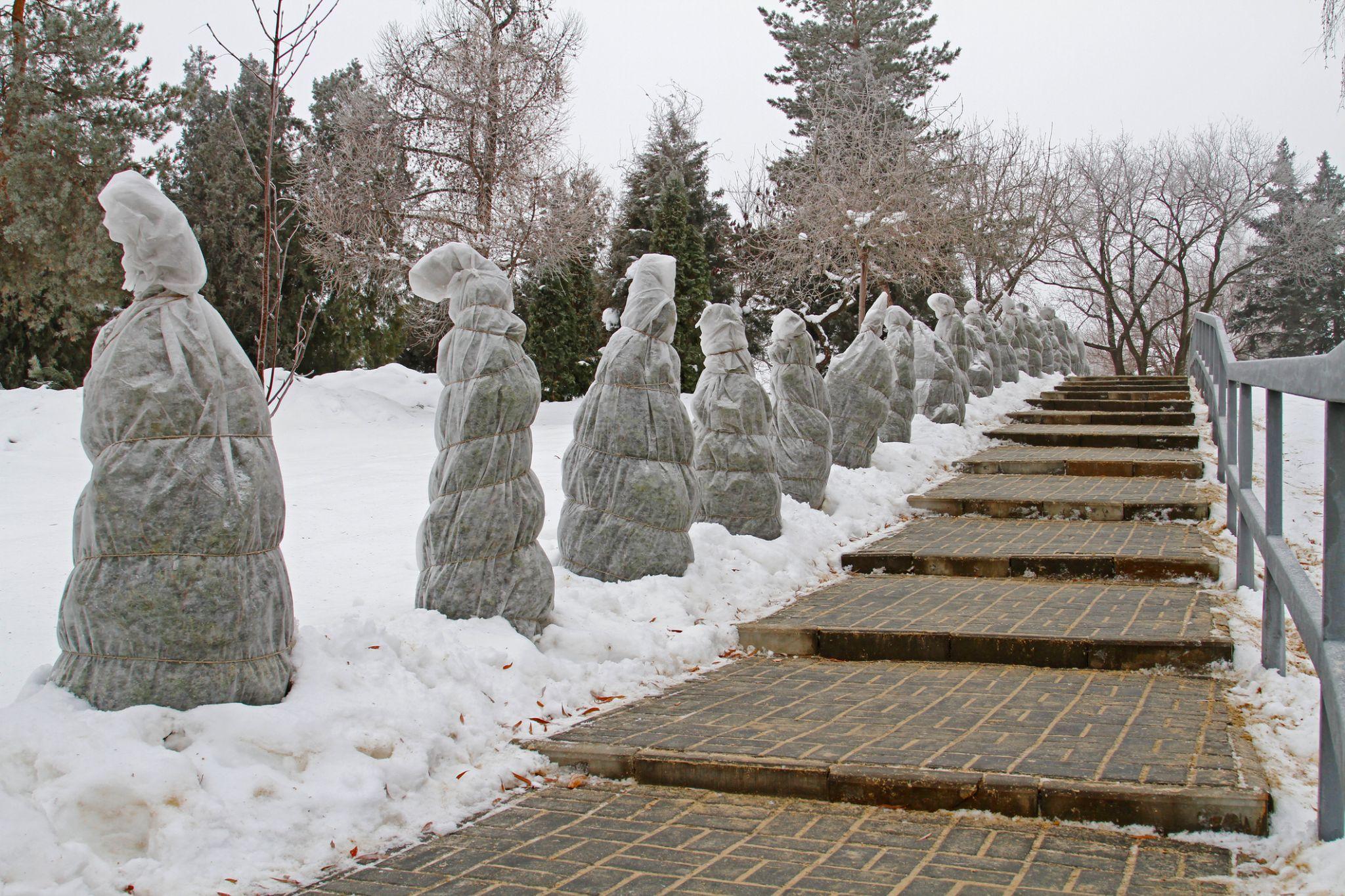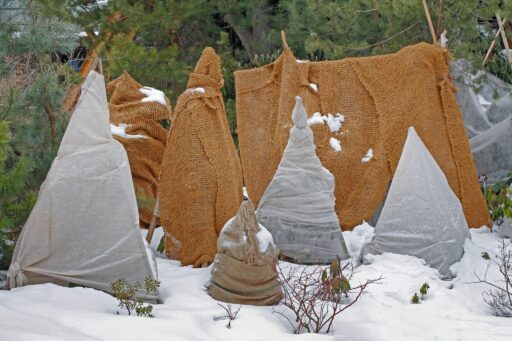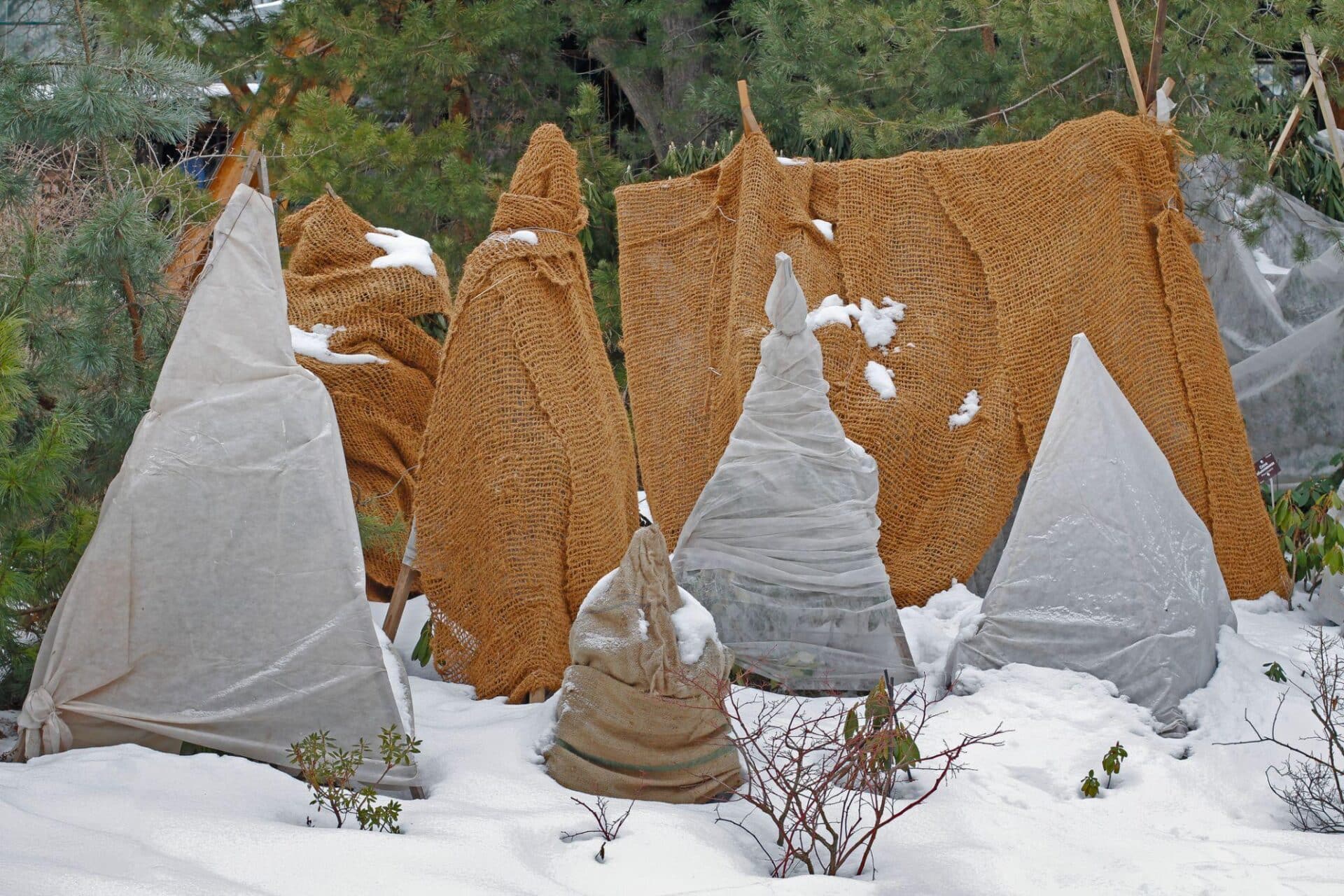Protecting your lawn and plants during harsh Canadian winters starts well before the first frost. Healthy soil, proper fall cleanup, strategic mulching, and thoughtful plant selection all contribute to winter resilience. Evergreens benefit from anti-desiccant sprays, while tender perennials may need extra insulation. Avoid heavy foot traffic on frozen grass, and consider using breathable covers for vulnerable shrubs. With proactive care in autumn and smart protection methods, your garden can emerge vibrant and intact when spring arrives.
Winter in Canada doesn’t just test thermostats – it challenges every living thing in your yard. From biting winds to sudden thaws followed by deep freezes, the season can leave lawns patchy and prized plants struggling. But with the right approach, your outdoor space can weather the cold with minimal damage. Understanding how to take care of plants in winter begins with preparation, not panic.
Many homeowners turn to seasoned professionals like Tazscapes for guidance on everything from soil health to structural protection, especially when planning long-term landscape resilience. Whether you’re tending a modest flowerbed or managing a sprawling garden, the principles of winter readiness remain consistent: insulate, shield, and simplify. Keep reading to discover practical, proven steps that safeguard your greenery without overcomplicating your routine.
Preparing Your Lawn and Garden for Winter

Winter doesn’t arrive overnight – but your lawn and plants shouldn’t be caught off guard when it does. The groundwork for cold-season resilience begins in early autumn, long before snow blankets the ground. A proactive approach not only minimizes damage but also sets the stage for a healthier, more vibrant yard come spring.
Trim, Clean, and Clear
Start by giving your garden a thorough cleanup. Remove dead foliage, spent annuals, and fallen leaves that can trap moisture and encourage fungal diseases under snow cover. Trim back perennials to about 2–4 inches above the soil line – this reduces the risk of rot while still allowing some structure to catch insulating snow. Avoid heavy pruning of shrubs and trees in late fall; this can stimulate new growth that won’t have time to harden off before freezing temperatures hit.
Adjust Your Lawn Care Routine
As temperatures dip, grass growth slows, but it doesn’t stop entirely. Continue mowing until growth ceases, keeping the final cut slightly shorter (about 2 inches) to discourage snow mould. However, don’t scalp the lawn – too short a cut weakens roots. Fall is also the ideal time for aeration and overseeding in bare patches, giving new grass time to establish before dormancy. Apply a potassium-rich, slow-release fertilizer to strengthen root systems without encouraging tender top growth.
Mulch with Purpose
Mulching isn’t just for summer – it’s one of the most effective ways protecting plants in winter. A 2–4 inch layer of organic mulch (such as shredded bark, straw, or pine needles) applied after the ground begins to freeze helps maintain consistent soil temperatures. This prevents the damaging cycle of freeze-thaw that can heave plants out of the soil. Keep mulch a few inches away from plant stems to avoid moisture buildup and rodent nesting.
Water Wisely Until Freeze-Up
Evergreens – like spruce, pine, and holly – continue to lose moisture through their needles all winter. If autumn has been dry, give them a deep watering before the ground freezes. This ensures they enter winter well-hydrated, reducing the risk of winter burn. The same goes for newly planted trees and shrubs, which haven’t yet developed extensive root systems.
Choose the Right Covering Strategy
Not all plants need the same level of protection. Hardy perennials often thrive under a natural snow blanket, while marginally hardy or tender varieties may need extra help. This is where knowing what to do with outdoor plants in winter becomes essential. For example, rose bushes in colder zones benefit from mounding soil or compost around their base, while fig trees or hydrangeas might require burlap wraps or temporary shelters.
Plant Type | Winter Protection Method | Best Time to Apply |
|---|---|---|
Tender perennials | Mulch heavily or lift and store indoors | After first light frost |
Evergreen shrubs | Anti-desiccant spray + windbreak | Late fall, before freeze |
Roses (hybrid teas) | Soil mounding or rose cones | After consistent cold |
Potted plants | Move to garage or insulate containers | Before hard freeze |
Newly planted trees | Deep watering + mulch ring | Late October–early November |
Advanced Strategies to Shield Plants and Soil
Once basic winter prep is complete, it’s time to layer in more targeted techniques – especially if you live in a region where temperatures regularly dip below –20°C or where wind chill and ice storms are common. These advanced methods focus on microclimate management, root protection, and structural support to ensure your garden survives not just the cold, but the full spectrum of winter stressors.
How to Insulate Plants for Winter
Insulation isn’t about warmth in the human sense – it’s about buffering against temperature swings. The goal is to keep the soil frozen steadily rather than cycling between thaw and freeze, which can rupture root cells. For in-ground plants, a thick layer of mulch (as mentioned earlier) is your first line of defense. But for container plants or marginally hardy species like figs, rosemary, or certain hydrangeas, additional steps are needed.
One effective method is creating a winter cage: drive stakes around the plant, wrap them in burlap or landscape fabric (never plastic – it traps moisture and promotes rot), and fill the enclosure with dry leaves or straw. This creates a breathable, insulated barrier that shields against wind while allowing airflow. For potted plants left outdoors, cluster them together near a sheltered wall, then wrap the pots in bubble wrap or hessian to protect roots from freezing solid.
Use Snow to Your Advantage
Snow is nature’s mulch – light, insulating, and surprisingly effective. A consistent snow cover of 10–15 cm can protect perennials down to –30°C. Avoid raking or shoveling snow off garden beds; instead, gently redistribute heavy snow from roofs or walkways onto planting areas if it’s clean and uncompacted. Just be cautious not to pile salty snow from driveways, as de-icing agents can damage soil and roots.
Protect Your Garden from Wildlife
Winter hunger drives rabbits, voles, and deer to chew on bark, stems, and even evergreen needles. Install wire mesh cylinders around young tree trunks, burying the bottom 2–3 inches to deter burrowing rodents. For shrubs, consider temporary fencing or repellent sprays made from natural ingredients like garlic or hot pepper – reapply after heavy snowmelt.
Manage Drainage and Ice
Poor drainage leads to ice lenses forming in soil, which can heave plants upward and expose roots. Ensure your garden beds slope slightly away from structures and avoid overwatering in late fall. If you notice ice forming on top of soil or around plant crowns, gently break it up with a hand fork – never pour hot water or use salt, as both cause more harm than good.
Know When to Intervene – and When Not To
A common mistake is overprotecting. Many native and hardy ornamental plants actually require cold exposure to complete their dormancy cycle. Blanketing them too early or too heavily can confuse their internal clock, leading to premature growth during a January thaw. Wait until after several hard frosts (soil temperature consistently below 5°C) before applying heavy mulch or covers. This timing ensures plants are truly dormant.
Situation | Action | Purpose |
|---|---|---|
Potted citrus or tender herbs | Move to unheated garage or basement | Prevent root freeze while maintaining dormancy |
Newly planted trees (<2 years) | Wrap trunk + mulch ring | Reduce sunscald and rodent damage |
Climbing roses or clematis | Lay canes gently on ground, cover with soil/mulch | Protect graft union and buds |
Raised beds | Cover with row cover or cold frame | Extend harvest or protect overwintering crops like kale |
Lawn near sidewalks | Avoid salt-based de-icers | Prevent grass die-off in spring |
Final Thoughts: Building Resilience for Spring
Winter in Canada isn’t just a season – it’s a reset. While it may seem like your garden is dormant or even lifeless under snow and ice, vital processes are still at work beneath the surface. Roots are conserving energy, soil microbes are slowly cycling nutrients, and hardy perennials are biding their time. The care you invest in autumn and early winter directly shapes how quickly – and how beautifully – your landscape rebounds when temperatures rise.








